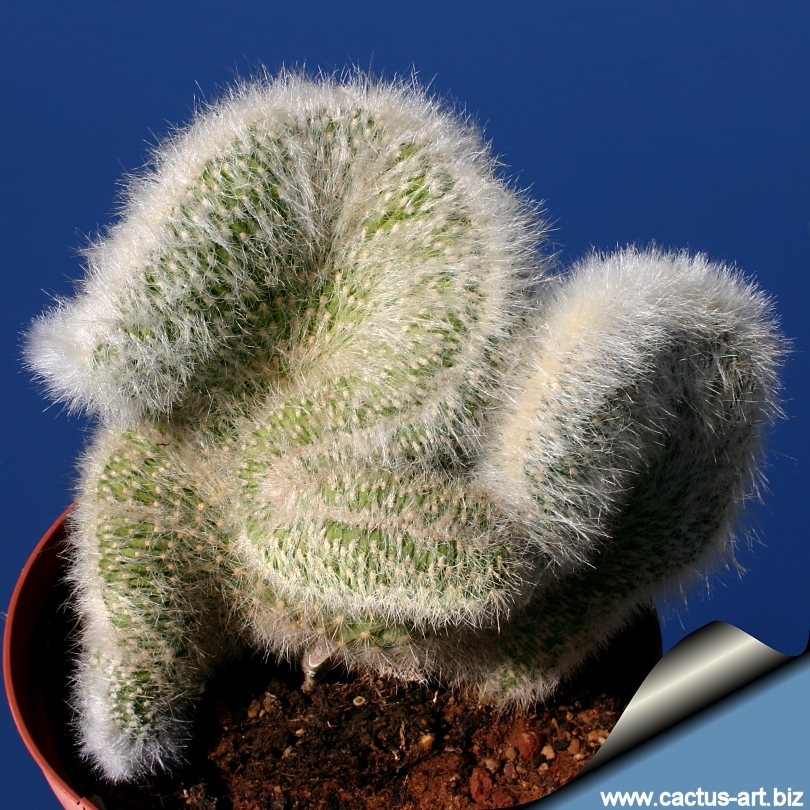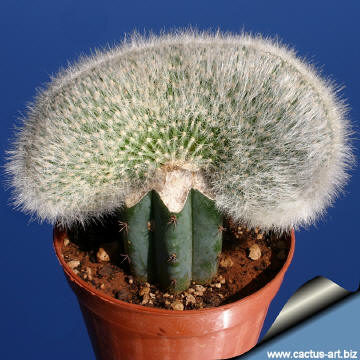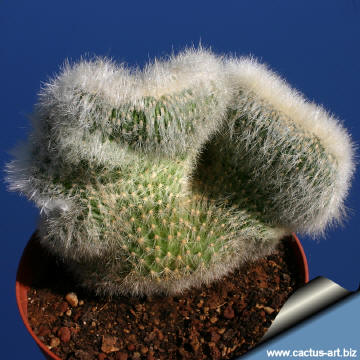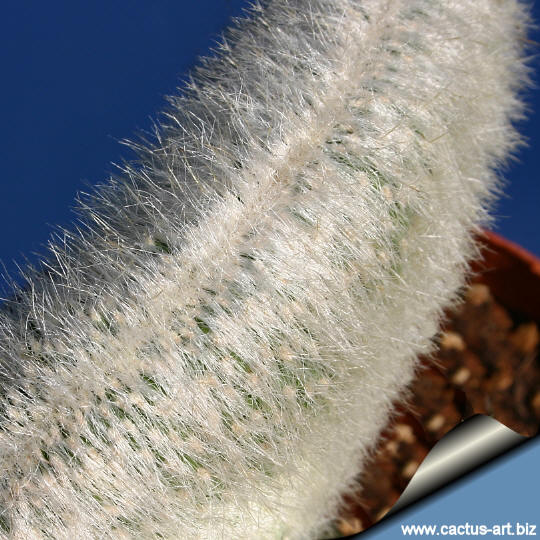|
|
|

A fast growing cactus that is covered with eye-catching silvery spines. Creates large clumps as it matures.
|
|
Description: Cleistocactus strausii is a slender,
erect, columnar group-forming cactus covered with so many silvery-white
hairy spines that the green stem is almost completely hidden. It branch
profusely from the base.
Stems: The stems are grey-green, slender columns up to 3 m tall ,
but only about 6 cm across.
Ribs: The "columns" are formed from around 25 ribs.
Areole: Closely set and densely packaged over the stems.
Central spines: Four, thin acicular, yellow-brown up to 40 mm
long.
Radial spines: 20-40 usually shorter,
fine,
bristly 15-50 mm long.
Flowers:
This plant is a heavy bloomer and mature
cactuses, over 50 cm tall,
will profusely produce deep violet-red
tubular, slightly curved flowers. The
blooms are 6 to 9 cm long and protrude horizontally from the stem
on the sides near the tips. In common with other cacti in the genus
Cleistocactus, the flowers hardly open, with only the style and stamens
protruding. Floral tube with silky hairs.
Blooming season: Late summer. Cultivated plants often flower freely.
Fruit: Pear shaped, red, up to 2 cm in diameter.
The
nice crested form is very nice and will form large silvery mounds.
|
|
 |
 |
|
It
is propagated usually by grafting as the cuttings will generally not
root.
Photo of conspecific taxa, varieties, forms and
cultivars of plants belonging to the
Cleistocactus strausii
complex.
|
|
Advertising
|
|
|
|
|
Family:
Cactaceae (Cactus
Family)
Scientific name:
Cleistocactus strausii (Heese) Backeb.
Kakteenkunde und Kakteenfreund, p.125, 1934
Basyonym: Pilocereus straussii Heese
Published In: Gartenflora 1907: 410, f. 49. 1907.
Type Specimen: LT: Heese, Gartenflora f. 47 (1907); ; LT
designated by Hunt & Taylor, Cact. Syst. Initiat. 21: 6 (2006)
Origin: It is native to high mountain regions of Southern
Bolivia and Northern Argentina.
Conservation status: Listed in
CITES appendix 2.
Common English Names include: Silver torch cactus
Etymology: Cleistocactus -
Greek words "Kleistos" meaning closed.
Strausii - For Strauss.
Synonyms:
- Borzicactus strausii (Heese)
A.Berger
Die Entwicklungslinien der Kakteen 53. 1926.
- Cephalocereus strausii (Heese)
Houghton
Journ. Cact. & Succ. Soc. Amer. 1: 170. 1930.
- Cereus strausii (Heese)
Vaupel
Monatsschrift für Kakteenkunde 23: 37. 1913.
- Cleistocactus strausii (Heese)
Backeb.
- Cleistocactus strausii var.
fricii (Dörfl.) Backeb.
- Cleistocactus strausii var.
jujuyensis Backeb.
- Denmoza strausii (Heese) Frič
Möller's Deutsche Gärtner-Zeitung 44: 170. 1929.
- Denmoza strausii var.
luteispina Frič
- Pilocereus strausii Heese
- Pilocereus strausii f. cristatus
Dörfl.
- Pilocereus strausii var. fricii
Dörfl.
|
|
|
|

Cultural Practices: The
Cleistocactus is a vigorous and easy to grow plant, and requires, strong
sunlight or
half shade, but not high temperatures.
Water
generously during the
summer, but
allow to dry fully before watering again. During the winter months
plants should be rather kept dry. In cultivation, watering too much in
winter often leads to root rot. It can withstand hard frosts down to
-10°C, but the tips might get damaged below -5°C. Since they are rapid
growers it needs plenty of space for its roots. Repotting should be done
every other year, or when the plant has outgrown its pot,
and give an occasional high potassium liquid feed. Its silvery spined
stems branch from the base and then grow straight upwards towards the
greenhouse roof, making a pleasant backdrop for the more numerous
globular cacti.
Propagation: It is propagated usually by grafting or sometime by
cuttings, but the cuttings will generally not root.
If you remove an offset, remember to let it dry for a week or so,
letting the wound heal (cuttings planted to soon easily rot before they
can grow roots). Rooting usually occurs within 3-8 weeks.


|
|